Japanese Acers: The ultimate guide to what to grow, how to grow it and the best acer varieties for your garden
Charles Quest-Ritson watches the leaves unfurl in one of spring’s most glorious sights — the reawakening of Japanese maples in all their infinite variety — and picks out best acer varieties to grow in your garden.
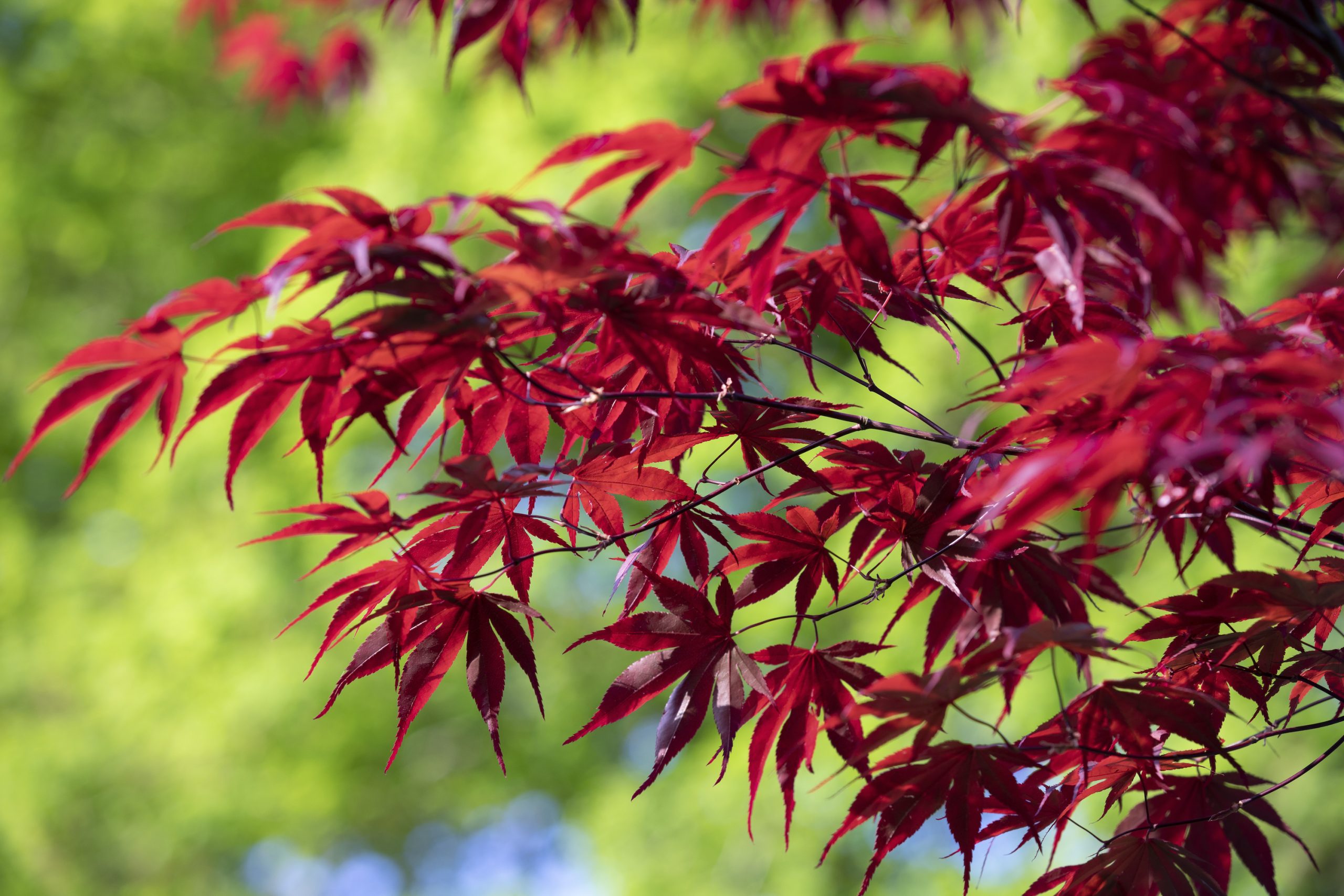
For beauty, elegance and variety, Japanese maples are beyond comparison. Cultivars with crimson leaves are the most popular, but it is also important to think about the eventual shape and height of the tree itself. When the leaves first emerge in spring, they droop down so that their tips look almost like claws.
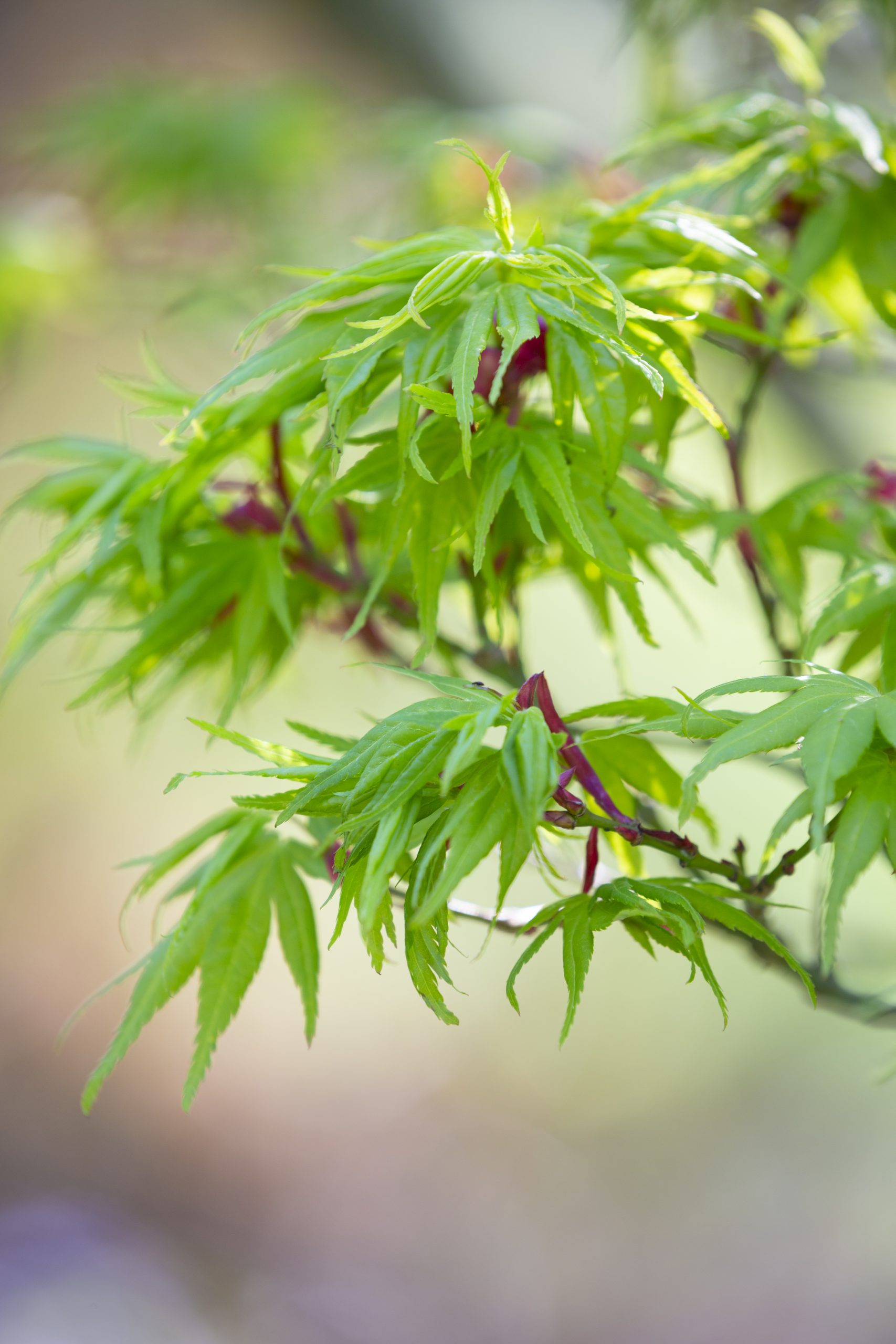
The flowers are invariably bright red and offer a striking contrast. All through summer and autumn, the leaves are prettiest when backlit by low sun: visit any public park in Tokyo in November and you will see hordes of amateur photographers catching the sunlight shining through the autumn leaves.
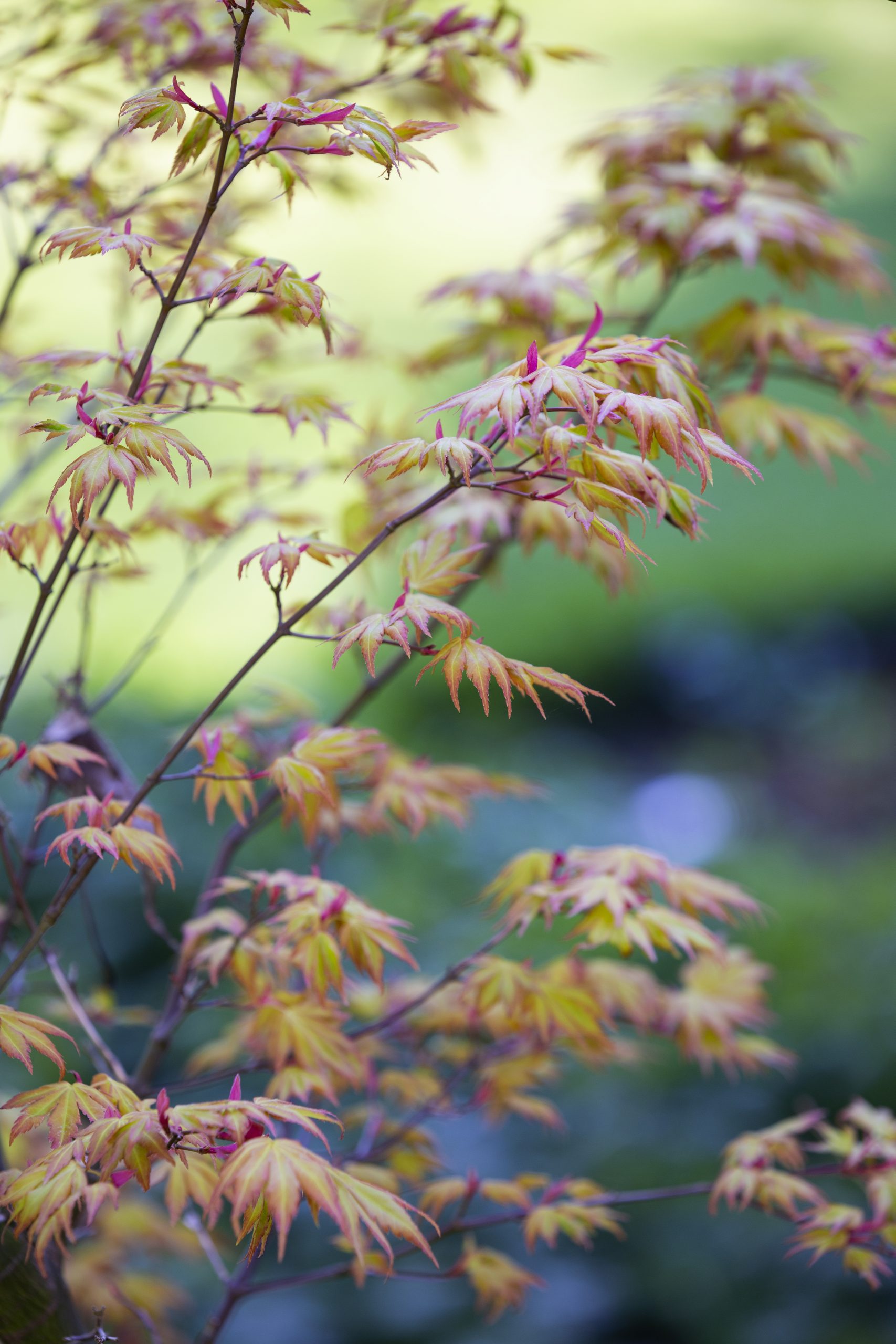
Japanese maples grow best in dappled shade. Some will tolerate full sun, if they are sheltered from wind and have enough moisture at their roots. Yellow-leaved cultivars and some of the red forms are most at risk of scorching, but this is not always obvious, because usually the only sign of too much heat is some browning of the leaf tips.
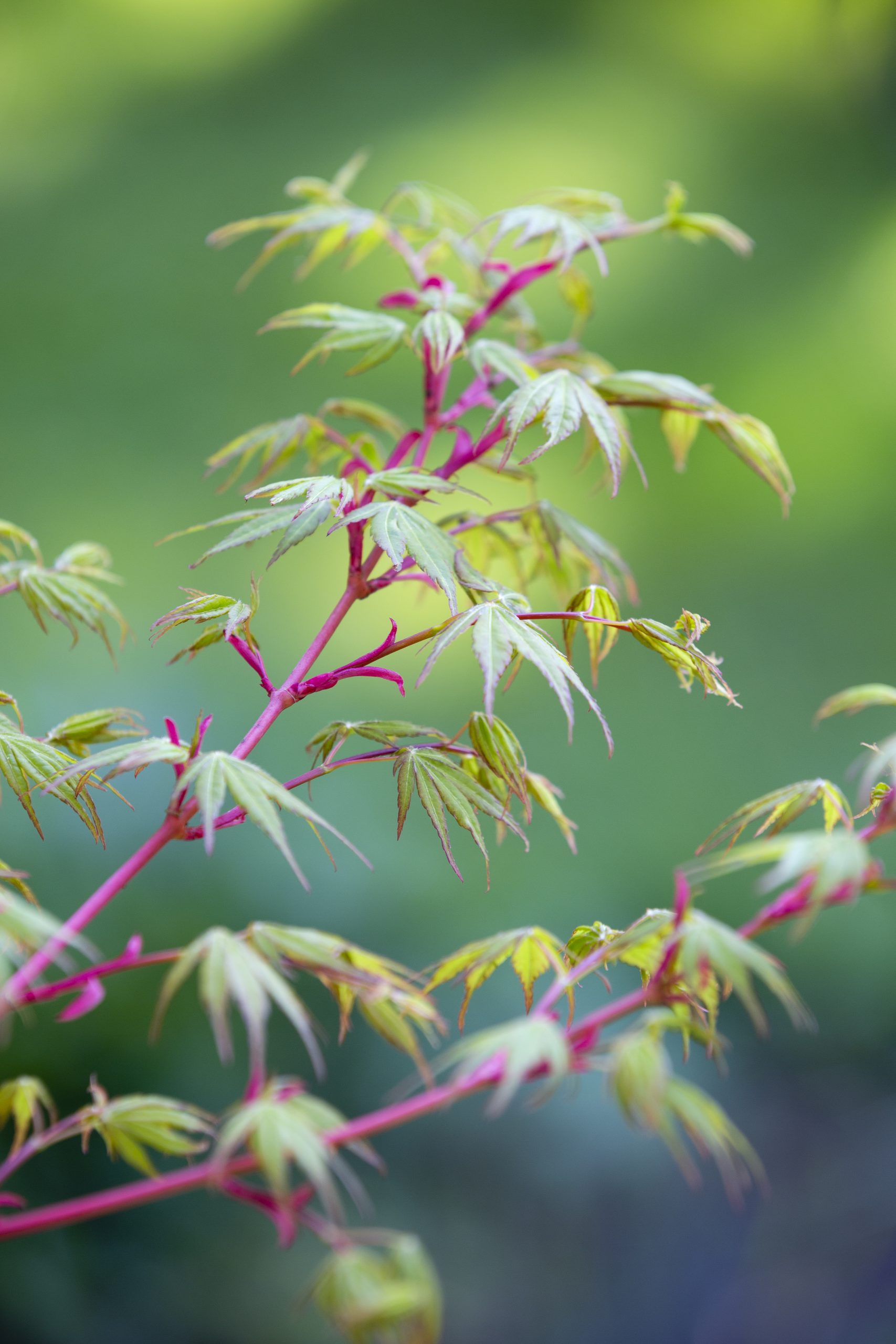
Japanese maples are winter-hardy here and grow in all soils, including chalk, provided they have enough water at their roots (which lie near the surface of the soil), but are never water-logged.
They do not need feeding, but appreciate some leafmould in the soil when you plant them and topdressing, from time to time, thereafter — but this is a counsel of perfection and there are fine specimens growing everywhere that seem to thrive on neglect.
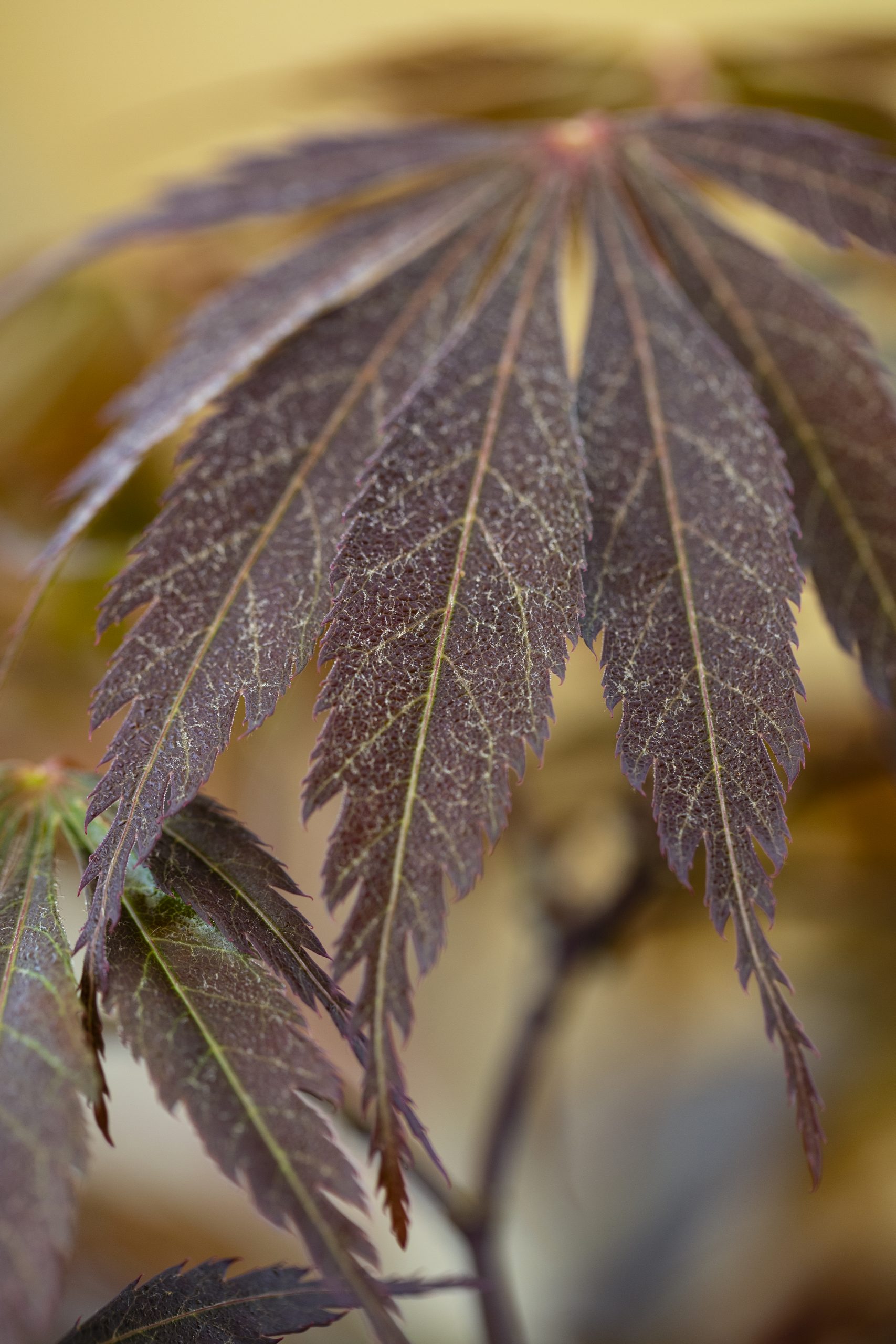
Most Japanese maples require no pruning — they are ‘self-cleaning’ — although some gardeners cut out branches that are overshadowed by others. The tree heals quickly afterwards. You can safely prune them as much as you wish if you want to create a bonsai plant or a Zen effect.
Many cultivars — especially the Dissectum types with sharply cut leaves and a mounding habit — are popular container plants, although maples in pots need special care. Terracotta tends to dry out too quickly in summer and the soil in plastic pots can become too soggy in winter.
Sign up for the Country Life Newsletter
Exquisite houses, the beauty of Nature, and how to get the most from your life, straight to your inbox.
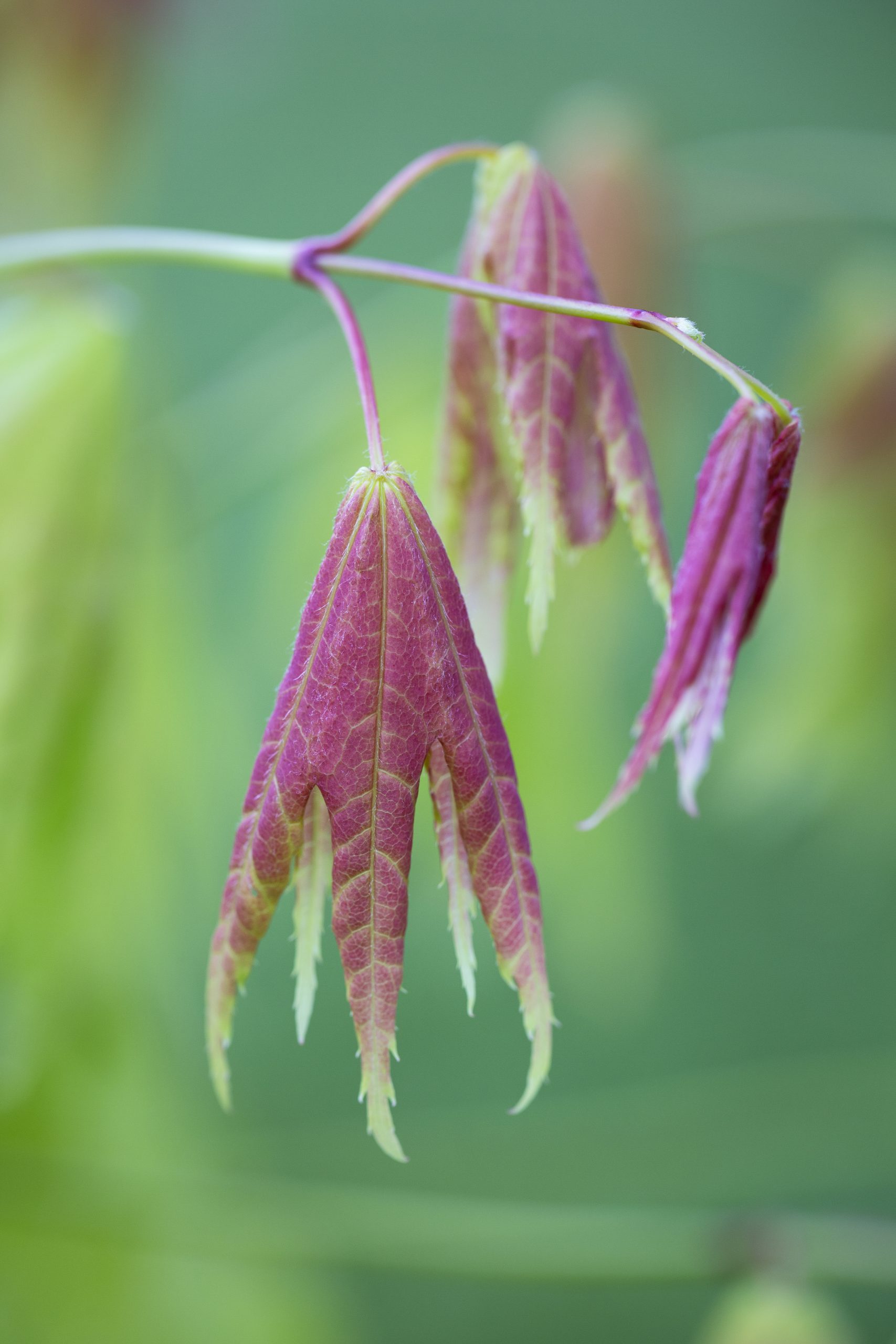
Potted specimens do, however, enliven a shady site, such as a dark yard, and look well with cloud-pruned pines or box. ‘Crimson Queen’ and ‘Emerald Lace’ are good in containers and are often chosen as focal points in London gardens. Other valuable Dissectum cultivars — all with AGMs — are ‘Ornatum’, ‘Orangeola’ and the more upright ‘Seiryû’.
Larger specimens, grown as small trees, associate very well with other shrubs, including rhododendrons, azaleas, kalmias and the spring colours of pieris. In the garden, they look especially well with ferns, mosses, hostas, grasses and Ophiopogon cultivars.
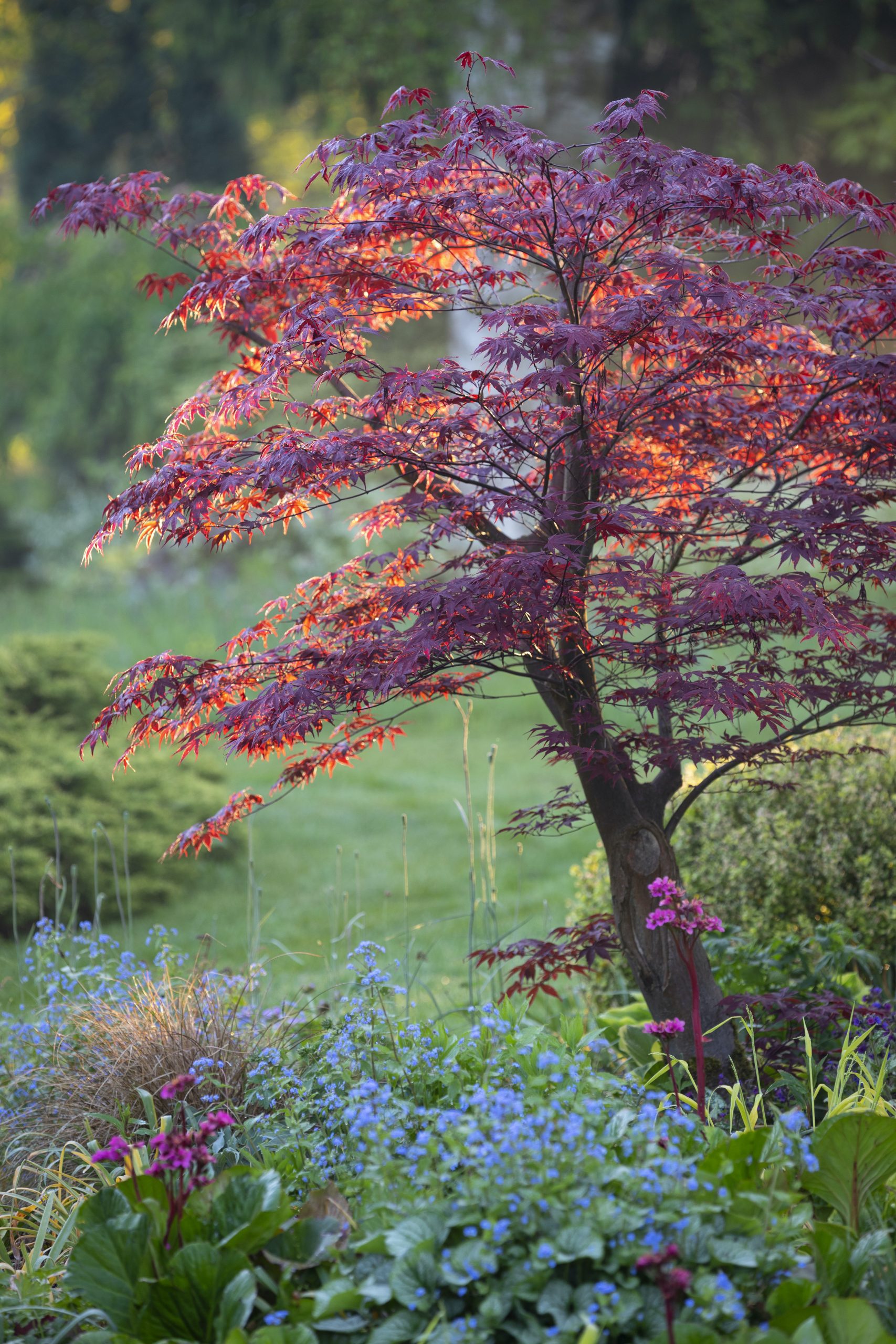
Crimson-leaved ‘Garnet’ is magnificent underplanted by red-leaved heucheras and Hosta ‘Frances Williams’; Hakonechloa macra ‘Aureola’ echoes the yellow leaves of such cultivars as Acer shirasawanum ‘Aureum’.
Primroses, bluebells and hostas invariably look gorgeous under the new leaves of all the Japanese maples shown here.
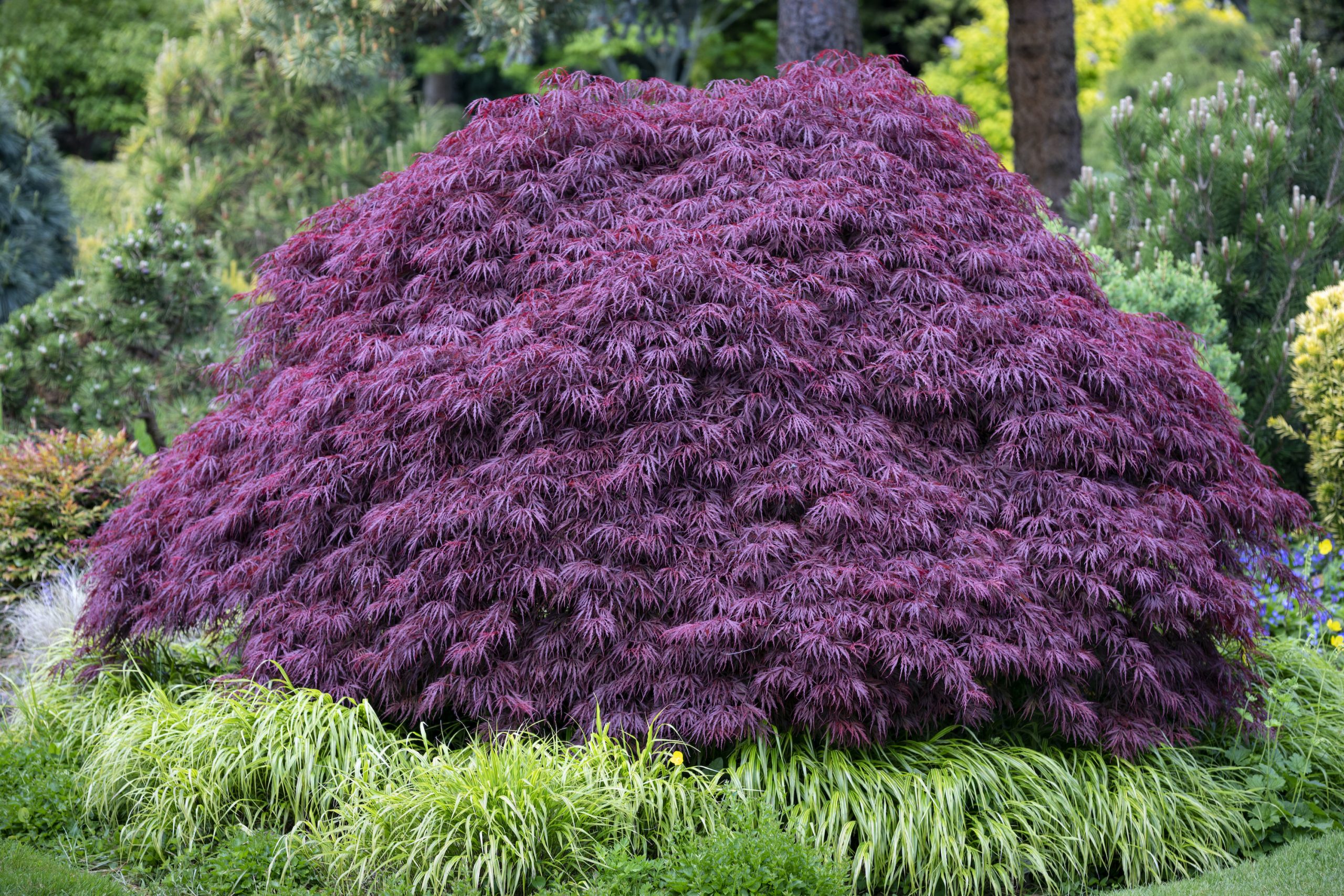
Six of the best Acer varieties to grow in your garden
When buying a Japanese maple, it is best to visit a nursery or garden centre to choose the individual plant that suits you best. Sometimes cultivars, such as ‘Atropurpureum’ and ‘Bloodgood’, are grown from seed, but they never come completely true to type, so it is important to establish that what you are buying was grown from a cutting or grafted from a true plant.
Over the centuries, the ingenuity of Japanese gardeners has developed Acer palmatum into galaxies of forms and cultivars and European and American nurserymen have, for at least 200 years, picked out seedlings and mutations that appear as attractive variations.
There are more than 1,000 cultivars — horticultural varieties — listed as available from British nurseries in the RHS Plant Finder and many more in the US and in Japan itself. Here are six of the best species for your garden.
Acer palmatum ‘Blood-good’ (AGM)
Probably the best straightforward crimson-leaved maple, this is a multi-trunked tree that grows to 15ft–20ft in height and 12ft–15ft in width. The leaves are large and deeply cut, pale red in spring, turning to dusky purple and finally to fiery crimson in autumn—handsome at all seasons. ‘Bloodgood’ prefers shelter and part-shade, but is sometimes a free-standing specimen
Acer palmatum ‘Crimson Queen’ (AGM)
This American selection is the best of the red Dissectums. Its deeply cut leaves open red, but turn purple-crimson in summer, then finish scarlet in autumn. It mounds up to create a feathery cascade, wider than tall, its weeping habit attractive even when leafless, typically 7ft tall and 10ft wide after 15 years
Acer palmatum ‘Emerald Lace’ (AGM)
This is perhaps the most exquisitely ‘Japanese’ of all maples. Its deeply dissected leaves are yellow-green (with crimson petioles) in spring, brilliant green into summer but orange, red and purple in autumn. It makes a compact shrub, mounding up and spreading out, reaching 12ft in 10 years
Acer palmatum Ōsaka-zuki (AGM)
This acer is renowned for its brilliant scarlet and crimson autumn foliage, but makes a handsome greenleaved specimen in summer and its leaves open yellow in spring. A shapely small tree (15ft–20ft high and wide after 20 years), it takes well to bonsai. Its large, deeply lobed leaves are happy in shade or sun and it makes a fine focal point in a small space or even a rock garden
Acer palmatum ‘Sango-kaku syn Senkaki’ (AGM)
The coral bark maple has red limbs that are striking in the winter sun. Its deeply lobed leaves are briefly salmon-yellow in spring before turning green for the summer and then red, orange and yellow in autumn. It is typic-ally 20ft high and 15ft wide after 20 years. ‘Eddisbury’ is an improved form
Acer shirasawanum ‘Moonrise’
A newish American cultivar selected for its compact, rounded shape (10ft high and wide after 20 years), its tolerance of bright sun and beautiful leaf-colour—carmine red with lime-green veins when it opens, then a fresh yellow-green in summer and finally orange and gold in autumn
Best nurseries for buying Japanese acer varieties
Westonbirt in Gloucestershire has the National Collection of Acer japonicum and Acer palmatum (Japanese cvs)
Barthelemy Maples, near Wimborne, Dorset
Bluebell Nursery, near Ashby de la Zouch, Leicestershire
Paramount Plants, Enfield, Middlesex
Mill Garden Centre, Armadale, Scotland
Larchfield Trees, only at shows
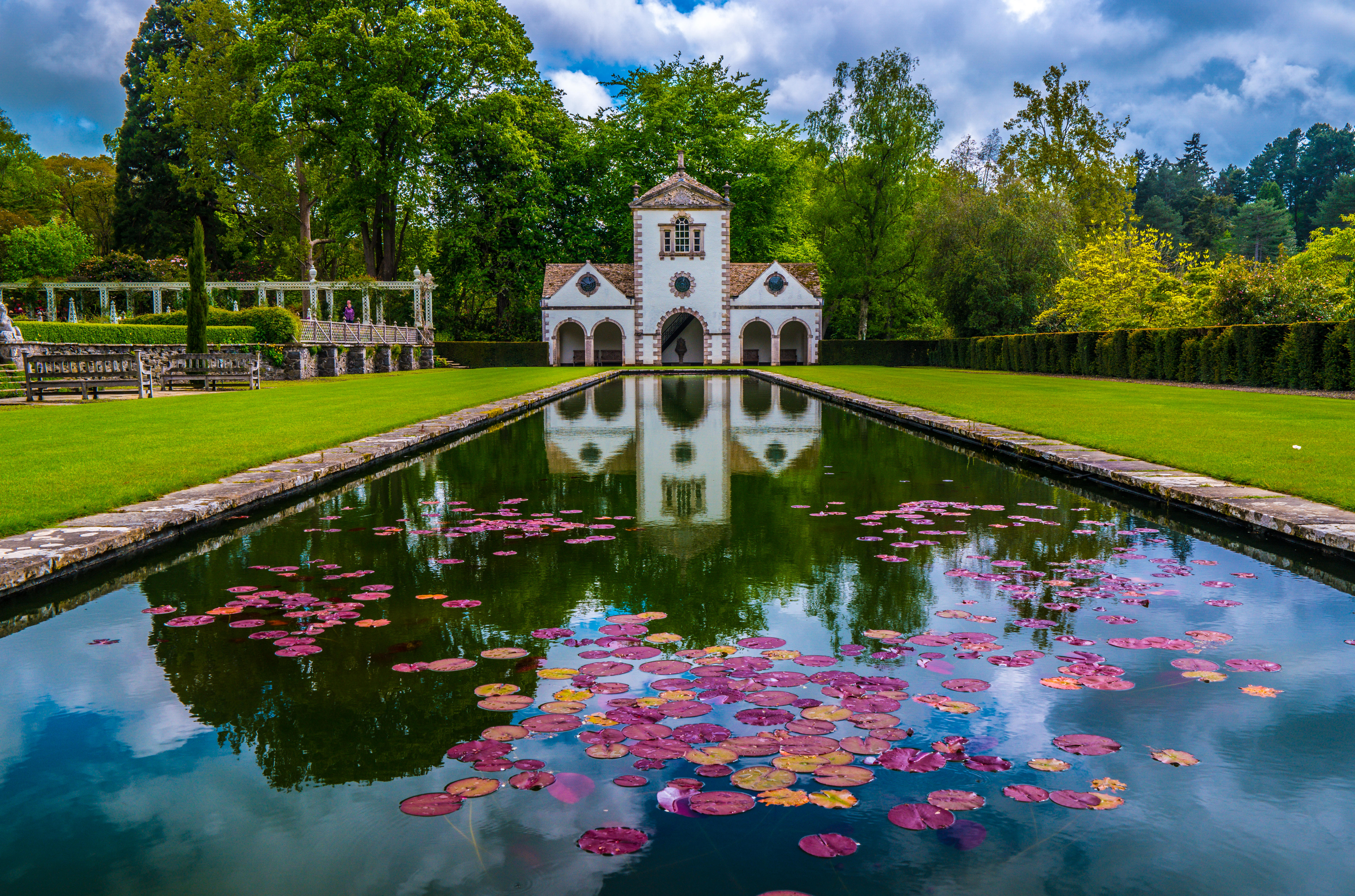
A month-by-month guide to the most beautiful gardens to visit in Britain
Some gardens are even better in winter. Read our list of the best gardens to visit all year round.
Charles Quest-Ritson is a historian and writer about plants and gardens. His books include The English Garden: A Social History; Gardens of Europe; and Ninfa: The Most Romantic Garden in the World. He is a great enthusiast for roses — he wrote the RHS Encyclopedia of Roses jointly with his wife Brigid and spent five years writing his definitive Climbing Roses of the World (descriptions of 1,6oo varieties!). Food is another passion: he was the first Englishman to qualify as an olive oil taster in accordance with EU norms. He has lectured in five languages and in all six continents except Antarctica, where he missed his chance when his son-on-law was Governor of the Falkland Islands.
-
 Five beautiful homes, from a barn conversion to an island treasure, as seen in Country Life
Five beautiful homes, from a barn conversion to an island treasure, as seen in Country LifeOur pick of the best homes to come to the market via Country Life in recent days include a wonderful thatched home in Devon and a charming red-brick house with gardens that run down to the water's edge.
By Toby Keel Published
-
 Shark tanks, crocodile lagoons, laser defences, and a subterranean shooting gallery — nothing is impossible when making the ultimate garage
Shark tanks, crocodile lagoons, laser defences, and a subterranean shooting gallery — nothing is impossible when making the ultimate garageTo collectors, cars are more than just transport — they are works of art. And the buildings used to store them are starting to resemble galleries.
By Adam Hay-Nicholls Published